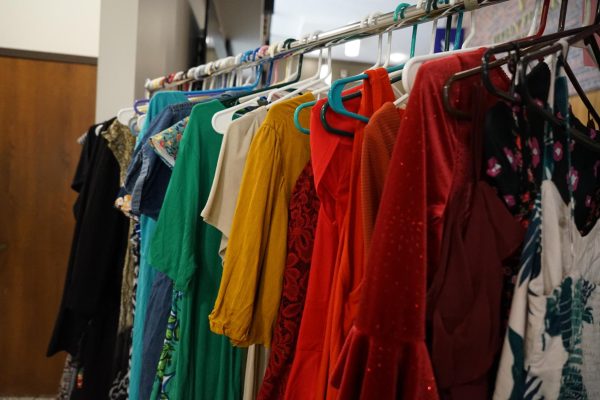Exploring gender nonconformity, students and faculty weigh in
“Clothes do not equal gender. I have personally felt the pressure of if I wear tight clothes I am going to be perceived and called a girl, but sometimes I just want to wear tight clothes,” one anonymous student said.
February 22, 2023
In 2019, Billy Porter wore a black gown at the 91st Academy Awards, becoming a modern pioneer of breaking the rules of men’s attire on the red carpet. But even before that, gay icon Elton John wore sequins and feminine clothing, even dressing up as the queen in 1984 at a concert.
So why now, 39 years later, has this movement of breaking down the barriers of clothing finally been praised by the masses? And why has Harry been the only celebrity praised for breaking these barriers? An anonymous student says one word: “fetishization”.
“We all deserve access to bodily and gender autonomy.” Dr. Mary Jo Klinker, a professor of women’s, gender and sexuality studies, explained. “It’s radical in of itself that [Harry Styles] is clearly not wearing these clothes in political statement, but where the issue lies is not pointing out who came before him. There are LGBTQ+ people that paved the way for him to be able to dress the way he does,” Klinker said.
Klinker voiced that, “A person’s gender identity is fundamentally different from and not related to their sexual orientation. The context of the discussion about gender includes attacks on trans youth through increased oppressive legislation, ex don’t say gay bill in Florida, the attack on trans youth in Texas by using CPS to control families of trans youth,”
Student advocate from Prism (a Winona State club for students of all sexual orientations and gender identities), Brynne Schultz, agreed with Klinker, saying that although Harry Styles is helping break out of the male “mold” pushed on society, it brings a double-edged sword for the pioneers before him.
An anonymous student spoke about their struggles in everyday life as a non-binary person, always feeling pressured by their peers to equate gender to clothing.
“Clothes do not equal gender. I have personally felt the pressure of if I wear tight clothes I am going to be perceived and called a girl, but sometimes I just want to wear tight clothes,” they said.
Katherine Quackenbush, the treasurer of Prism, and Schultz both have the same story when talking about how they are perceived as non-binary people.
“In real everyday life if people do wear clothes outside of the binary norm, it is not as loved,” Quackenbush said.
Schultz continued, calling out the double standard of straight men vs gay men wearing historically “feminine” clothing, saying that if it is a gay man, they are “dressing as a woman” or they “want to be a woman” but if it’s a straight man, the consensus is that he is being fashion-forward.
Gender identity is each person’s internal and individual experience of gender. It is a person’s sense of being a woman, a man, both, neither, or anywhere along the gender spectrum. A person’s gender identity may be the same as or different from their birth-assigned sex.
Gender expression is how a person publicly expresses or presents their gender. This can include behavior and outward appearance such as dress, hair, make-up, body language and voice. A person’s chosen name and pronouns are also common ways of expressing gender. Others perceive a person’s gender through these attributes.
Opposite Styles on the spectrum, Billie Eilish did not receive the same love for flipping gendered clothing norms. Eilish wore baggy and historically “masculine” clothing up until May 2, 2021, when she flipped the narrative and wore lingerie in Vogue.
Billie Eilish was constantly judged for wearing baggy clothes, but it is important to note that Eilish only started wearing tight clothes when she was nineteen. All of those that were previously concerned about Eilish’s baggy clothes were concerned about a minor not wearing tight clothing.
Schultz, Quackenbush, Klinker and the anonymous student all had one thing in common, and that is that they choose clothing based on comfortability, not gender. They all agreed that even though they may be perceived a certain way while wearing different clothes, it has no affect to why they are wearing the outfit.
*Correction (3.15.23): Made changes to Mary Jo Klinker’s quote to more accurately reflect their message.





































































